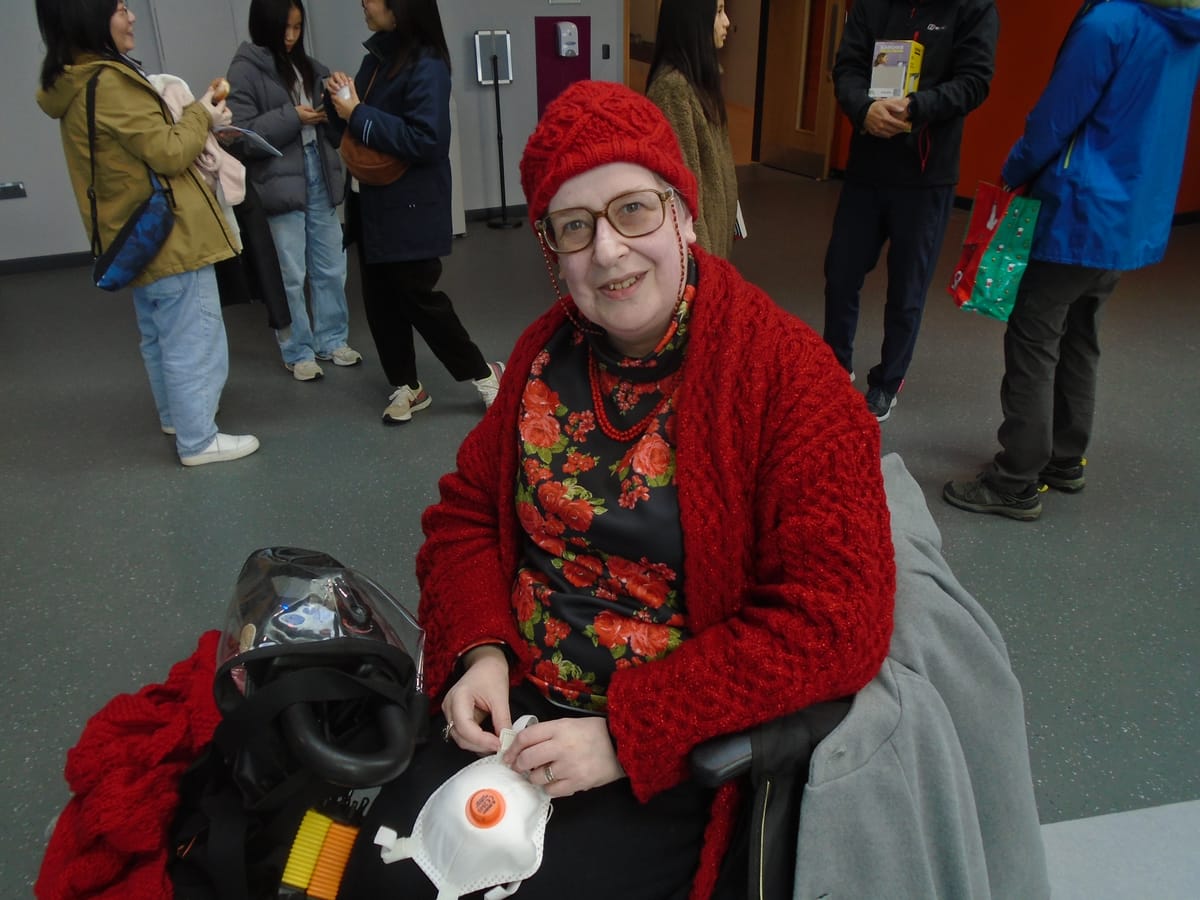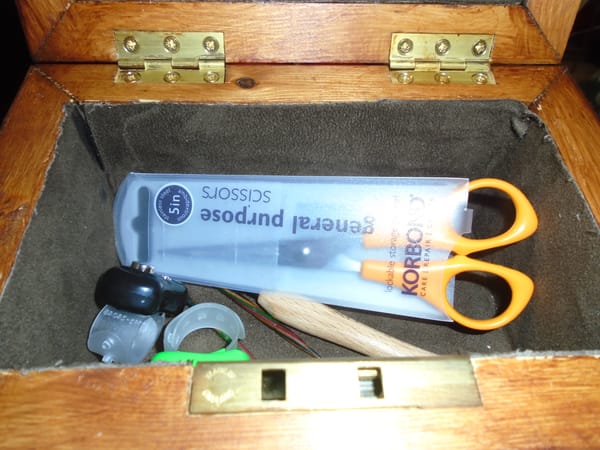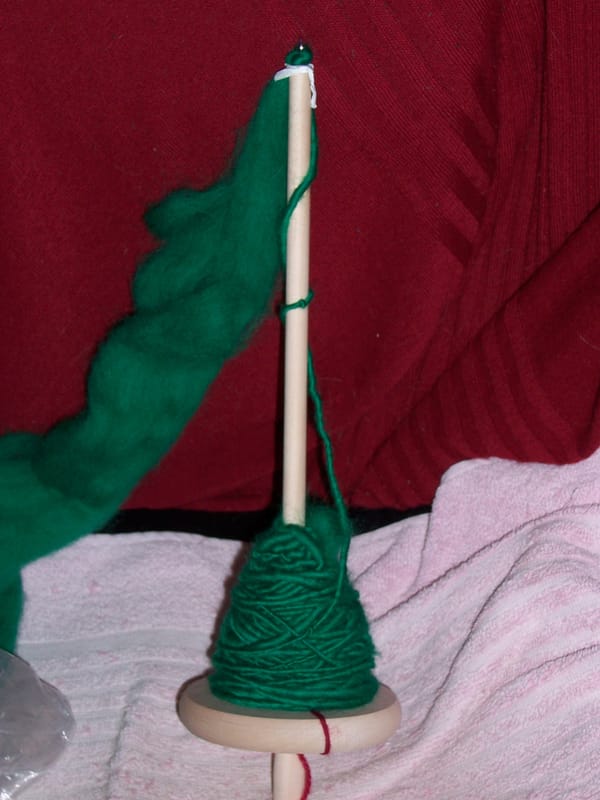Southbank Style

Today we're all about the Nina Lee Southbank Sweater, which is my current sewing obsession; it is just such a useful style that I'm making several of them. The one you see here is the first one, made in a rather snazzy deadstock scuba fabric, and at the time of writing I've almost finished the second, made in a black and gold sweater knit, also deadstock. (You might notice a theme here. I really like using deadstock. As long as you have the patience to scroll through a lot of fabrics, you're pretty much guaranteed to find something you love at a bargain price, plus you're helping to do your bit for the environment by keeping it out of landfill. And, seriously, look at this scuba - would you want that to be buried somewhere?)
The pattern comes in two size ranges, so I bought the 16-28, because I assumed that it was going to be like most patterns and I'd come out at about a size 20-22. Actually, no. The sizing for this version of the pattern starts at 106-88-114, which is the 16 (still technically too big for me at the waist and hips!) and goes up to a wonderfully generous 136-118-144, which is the 28. So it will fit pretty much anyone. It's designed for stretch knits, so there is not a huge amount of ease at the bust and hip, and I took this into account when deciding what size to make. Normally I'm inclined to pick the size that works for my lower half and then do a full bust adjustment, which is tedious but usually gives the best results; however, this time I went for the size 18, designed for 111-93-119. That was going to give me a good fit at the bust, and if it turned out a bit loose around the midriff, that was fine, because... OK. This is where I introduce you to Sibyl.
Stroppy Sibyl the Cranky Colostomy, to give her full name and title, is an evil little blighter who sits on my midriff and causes trouble. (To be fair, it could be a lot worse. When I was originally ill in 2016, in order to save my life they had to fit me up with Squirty Sidney the Ill-Tempered Ileostomy, who was several light-years worse than Sibyl. He was quite capable of blowing his kit off twice in one day, and he very frequently did it in the small hours. In 2019 they packed him off to stoma hell, where I have no doubt he was immediately welcomed onto the staff, and Sibyl took his place... so don't feel too sorry for me!) Anyway, Sibyl is generally all right in the mornings - that's when she sleeps - but she starts getting lively from about lunchtime. I won't go into all the unsociable things that she does, except to say that she does still blow sometimes, though not nearly as often as her late unlamented brother. So I wear a pad over her, which is permanently held in place by a rather nice suspender belt. And what with the pad, and Sibyl's tendency to fill her bag (sometimes dramatically fast, and quite often with air), things can get a bit... balloony down there. So I thought, all right. I'm just going to make the 18. As you can see from the photo, it turned out to be a good call.
I said the Harry was an easy sew. The Southbank is, if anything, even easier, though I'm not quite sure how well a machine would manage the cuffs; they're fine by hand, but you do have to stretch the cuff to fit the sleeve and I can imagine that being a trifle fiddly. As is commonly the case with independent patterns, the seam allowance is only 1 cm, but since knit fabrics on the whole don't fray, that's not a problem. The construction is very simple; it's like a shirt, in that you join the shoulder seams and then sew the sleeve head into the armscye, and only after that do you join the side and sleeve seams as one. I much prefer that to setting in after the side seam is sewn up. The instruction leaflet is extremely clear, and contains specific advice on sewing with knits, so this pattern would be excellent for a beginner.
There is, however, just one thing I disagree with, and I've seen it elsewhere too; it seems to be rather fashionable in dressmaking patterns at the moment. That is, when you have a piece that is folded double like a waistband (or, in the case of the Southbank, the collar and the cuffs), the pattern tells you to sew it on as if it were a single layer, so that you end up with three completely unnecessary raw edges on the inside. No way am I doing this. Not even on a fabric as amenable as the scuba (about which more in a moment). I dislike raw edges, even when they're not going to fray, and if I can possibly enclose them neatly I'm going to do it. So I sew both the collar and the cuffs on like a traditional waistband. In other words, I turn the seam allowance under on one edge and tack it down, sew the other edge to the rest of the garment, fold over, and then catch-stitch the tacked edge to the inside of the seam I've just sewn. That is just so much neater, and it has the added bonus that you're not sewing through three layers (more where you're going over the seam allowances from the other seams).
As for the scuba itself: I hadn't previously sewn with this type of fabric, so it was an interesting new learning experience. The print doesn't come through at all, since the fabric is dense, thickish, and slightly spongy; the reverse side is plain white, or close to it. That means it's very easy to mark, and, not only that, the chalk tends to stay put, even under a fair bit of manipulation (that turned out to be very useful when doing the cuffs). Because of the thickness I did have to stab-stitch just to keep it accurate, but other than that it was very easy to sew. Unlike some similar stretch knits, it will take pins well without leaving holes, and above all it is extremely stable and well-behaved when you are cutting out. It smooths out easily, doesn't have any tendency to pull at an angle, and doesn't shift about; so even if you're Team Scissors rather than Team Rotary Cutter (I've used both, and tend to prefer scissors, but only because of the rather limited arrangements I have for cutting out) you can cut with great accuracy. If you're not used to sewing with knits and the prospect scares you a little, start with scuba. It will definitely build your confidence. (The black and gold sweater knit, on the other hand, is a whole lot less stable; it's going to look amazing, but it's definitely not the fabric to try if you're jumping into knits for the first time.)
...oh, you wanted to know about the knitwear, too? Don't worry. There'll be more about that in later posts!




